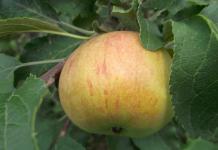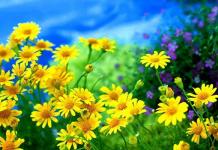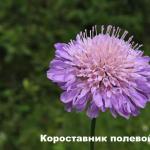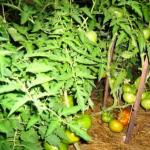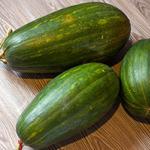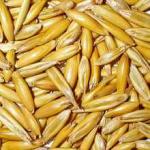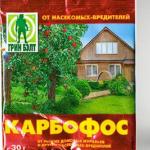Meadow flowers are a separate multifaceted world.
He is beautiful and incomprehensible. It’s hard to believe that such beauty is created on its own - designers don’t work on it, selecting varieties by color and location, but whenever we find ourselves in a field with meadow flowers, we can’t stop looking and breathing enough. After all, there are no flaws in the design.
Many flower growers and gardeners strive to get a piece of pristine natural beauty for their plot - they dig up bushes with roots or buy seeds. Moreover, meadow flowers are not only an aesthetic pleasure - each plant has a healing effect and is used in folk medicine.
So it turns out, two in one: both beautiful and useful, and if it’s right outside the window, then it’s absolutely great!
Meadow flowers amaze with their diversity, simplicity and at the same time beauty. These flowers naturally grow in meadows and fields, on the edges of forests.
By the way, herbalists have noticed that flowers collected from meadows have greater power in treating diseases compared to artificially cultivated ones, precisely because humans did not interfere with their growth and development.
Kinds
There are a lot of types of meadow flowers, and in this article we will look at some plants, their descriptions and photos, which can be found not only in meadows, but also in our garden plots, and everyone can decide what to collect in the summer for a home medicine cabinet, and what to plant in a flower bed .
If you observe meadow flowers in their natural environment, you can easily understand that they love a lot of bright sunny color and do not tolerate shade, with the exception of flowers that can also grow in the forest, for example, fireweed.
If you want to have them in your flowerbed, you will need to provide them with light: always plant them in the first line. Moreover, most representatives of meadow flowers are low- and medium-sized.
Meadow flowers are not afraid of weeds, because they are used to living in close community with hundreds of neighbors in the meadow. Their roots intertwine, creating a carpet that absorbs rainwater well and also draws moisture from the soil itself - so care for such plants will be minimal.
Description of species
Althaea officinalis
A perennial herbaceous plant that grows up to half a meter in height. Leaf blades grow directly on the stem; the higher, the smaller the leaves. They have an oblong-pointed shape and a bluish green tint. The buds grow singly at the top of the stem and are pale pink in color.
The plant has average frost resistance, which, nevertheless, allows it to grow well in central Russia, including in the Moscow region.
Amaranth spicata
This is the wild ancestor of cultivated amaranth. Gardeners are more familiar with it as amaranth, a malicious weed. But not everyone knows that it has high nutritional and medicinal value.
Amaranth reaches a height of 1 meter. The leaves are arranged alternately and have an oblong shape. The leaves are smaller at the top of the stem and larger at the bottom.
The flowers are very small, almost invisible, yellowish-green in color and form spike-shaped inflorescences. Not at all picky about soil and weather conditions.
Pansies
A perennial plant that grows up to 40 cm. The leaf blades grow alternately, the bottom ones are larger than the top ones. Flowers on thin stalks, large, tricolor. Frost resistance is high. The habitat is very wide.
Ledum
It grows in the form of a bush and reaches a height of two meters.
Small bluish-green leaves grow along the entire stem, from bottom to top. Blooms profusely.
The buds are four-petaled, white, or more often crimson in color, with a rich aroma, up to 4 cm in diameter, collected in umbrella inflorescences. Winter-hardy, unpretentious.
Valerian officinalis
A perennial flower that grows up to one and a half meters in height. The stem is bare, little covered by leaves. The buds are small, pale pink, collected in umbrella inflorescences, very fragrant. Its habitat is wide, but due to high demand, it can be difficult to find.
It has found application not only in medicine, but also in the cosmetology industry; for these purposes it is cultivated artificially.
meadow cornflower
A perennial representative of meadow flowers, growing up to a meter in length and considered a weed, especially in cereal fields. The leaves have an elongated oval shape, are pubescent, green with a bluish tint. The buds are pale pink, about 5 cm in diameter.
Cornflower blue
Perennial representative of meadow flowers. It differs from meadow cornflower in the color of its buds - they are more saturated in color, blue.
Mouse peas
A perennial flower with a creeping stem, reaching a shoot length of one and a half meters. The leaf blades are miniature, inconspicuous, ash-green. The buds are not large in size, but have a rich purple-pink color.
Dianthus meadow
A perennial flower that grows up to 40 cm. The leaf blades are pubescent and have a linear shape. The buds are red, pink, less often white, and the petals are jagged. Belongs to rare, protected plants.
Meadow geranium
A perennial representative of meadow flowers, growing up to 80 cm. The lower leaves are divided into five parts, the upper leaves into three. The buds are five-petaled, numerous, large, and lilac in color. Very widely represented on the map of Russia.
Pepper Knotweed
A perennial representative of meadow flowers, growing 90 cm. Belongs to the Buckwheat family. The stem is straight and thin, densely covered with leaves. The leaf blades are feather-shaped. The buds are small, snow-white, collected in spike-shaped inflorescences.
Bird's knotweed
A perennial flower reaching half a meter in length. The stem is creeping, highly branched. The leaf blades are small, opposite, and densely cover the stem.
The buds are inconspicuous, white, located in the axils of the leaves.
Polygonum has good winter hardiness and high nutritional properties. Used in folk medicine and as a fodder plant.
Gentian
A perennial flower in the form of a shrub, reaching a length of one and a half meters. The stems are straight and dense. Leaf blades are dark green, opposite. The buds are blue, blue or purple, bell-shaped, quite large and grow one at a time. The growing area is wide.
Goose onion
A perennial representative of meadow flowers, growing up to 50 cm. The leaf blades are collected in a basal rosette, very long and thin. The buds are small, yellowish, with a honey smell. The plant is thermophilic.
Elecampane tall
A representative of meadow flowers, growing in the form of a bush and reaching one and a half meters in height. Long dark leaf blades form a rosette. The buds are large, orange-yellow, similar to a large chamomile, but the petals are much narrower. The root has medicinal value and is used in cosmetology.
Delphinium
A perennial flower, in the form of a bush, reaching a length of one and a half meters. The leaf blades form a rosette and are shaped like arrows. The peduncle is long, forms a pyramidal inflorescence with many small but catchy buds, in snow-white, pink, blue, lilac, red and yellow shades. The flower is thermophilic. At home, soap is prepared from delphinium.
Wild onion
A perennial representative of meadow flowers, growing as a bush and reaching half a meter in length. The leaf blades are similar to the feathers of homemade onions, but not as thick and fleshy. The tall peduncle is topped with a ball-shaped inflorescence. Has nutritional value. The growing area is wide.
Sweet clover
A perennial flower reaching a length of two meters. Leaf blades are arranged oppositely or in pairs on the stem. The buds are small, yellow or snow-white, very fragrant. It is famous as a honey crop and a medicinal plant.
St. John's wort
A perennial representative of meadow flowers, growing up to 80 cm. The erect, rigid stem is covered with a large number of small dark green leaves. The buds form yellow inflorescences at the tops of the stems. It is found both in Russia and Ukraine. Used to treat various ailments.
Strawberries
A perennial representative of meadow plants, growing thirty centimeters.
Fireweed angustifolia (Ivan-tea)
A perennial representative of meadow plants, growing up to one and a half meters.
The stem is straight, thick and succulent, densely covered with linear-lanceolate leaves. The buds are purple-pink, forming apical racemose inflorescences. The growing area is wide. It is used to treat various ailments and is a raw material for making tea.
Clover
A perennial representative of meadow flowers, growing up to 80 cm. The stem is erect and highly branched. The leaf blades are oval-shaped and collected in groups of three. The buds are collected in spherical inflorescences, painted pink and crimson. Nitrogen fixer. Used as a honey plant, fodder and medicinal plant.
Common bluebell
A two-year-old representative of meadow flowers, growing up to 70 cm. The stem is straight, weakly covered with small leaves arranged in an alternate arrangement. The buds are purple, collected in panicle inflorescences. A rare protected plant that grows in temperate climates.
Field bark
A perennial representative of meadow flowers, growing up to 80 cm. 
The stem is straight, ending in a single blue-purple flower.
The leaf blades form a basal rosette and are lanceolate in shape. A good honey plant.
Lily of the valley
A perennial representative of meadow flowers, growing up to 40 cm and belonging to the Liliaceae genus. The stem is thin, bare, erect. The leaf blades are large, oval-elongated, form a basal rosette, from which emerges a thin stem with small white flowers.
The buds form a spike-shaped inflorescence and are shaped like bells.
A rare protected species, listed in the Red Book.
Common flax
An annual representative of meadow flowers, growing up to 80 cm. The stem is thin, erect, ending in a peduncle with a blue flower. The leaf blades are small, located in pairs throughout the stem. The seeds are edible and are used to make oil. The stem is a source of fiber for textile production.
Common toadflax
A perennial representative of meadow flowers, growing up to 90 cm. The stem is straight, densely covered with small pointed leaves. The buds are pale yellow with an orange center.
Lupine
A perennial representative of meadow flowers, growing in the form of a shrub and reaching a length of 120 centimeters. The stems are straight, strong, ending in racemose peduncles of blue-violet color. The leaf blades are palmate, form a basal rosette and partially cover the stem. Grows well in central Russia.
Coltsfoot
A perennial representative of meadow flowers, growing up to 30 cm. The stem is erect, ending in a peduncle with a single yellow flower. The leaf blades are smooth on top, pubescent below, form a basal rosette, which appears after the flower withers.
Dandelion
A perennial representative of meadow flowers, growing up to 60 cm. The stem is erect, hollow inside, contains milky juice and ends with a single bright yellow flower. The leaf blades, elongated in the shape of a feather, form a basal rosette.
pharmaceutical camomile
An annual representative of meadow flowers, growing up to 60 cm. The stem is straight, branched at the base, ending in a flower with white petals and a yellow core.
The leaf blades are elongated, narrow and carved. It has found application in folk and traditional medicine and cosmetology.
Spiraea
A perennial representative of meadow flowers, growing up to 80 cm. The leaf blades on long stalks are palmate in shape. The buds are small, numerous, colored white and pink.
Yarrow
A perennial representative of meadow flowers, having the appearance of a subshrub, belonging to the Asteraceae. The stem is straight, covered with feathery compound leaves and ends in numerous inflorescences, baskets, with white or pink-white flowers.
Common chicory
A perennial representative of meadow flowers, reaching a length of one and a half meters. The stem is straight, very strong, branches and ends in numerous blue flowers.
The leaf blades form a rosette and partially cover the stem. The growing area is very wide. Used in cooking and as a medicinal plant. A drink that tastes like coffee is prepared from the roots.
Thyme
A perennial representative of meadow flowers with a creeping stem, growing up to 40 cm. The stem is covered with small oval-shaped leaves and ends in pink-violet inflorescences. All parts of the plant are very fragrant and are used for tea, as a seasoning, in medicine and cosmetology.
Echinacea
A perennial representative of meadow flowers, reaching a meter in height. The stem is straight and rough. The leaf blades are wide and oval in shape. The buds are large, up to fifteen centimeters in diameter, collected in basket inflorescences. The color of the flowers covers all shades of pink or red-brown.
Eschszolzia
A perennial representative of meadow flowers, growing up to 45 cm. Very light-loving. The buds are white or orange, cup-shaped. It begins to bloom early, from the beginning of June and blooms until frost.
Rules for the procurement of medicinal plants
- plants need to be collected within a clearly defined time frame;
- collect in sunny weather, after the dew has completely dried;
- collect clean plants, away from sources of pollution;
- after collection, the grass is washed in cold water;
- during drying, use shade from the sun or electric dryers, setting the temperature to no more than 50°C;
- drying is carried out until brittle. Parts of the plant that are not fully dried may become covered with mold and lose their vigor;
- The herb should be stored in paper or fabric bags for no more than two years.
Wildflowers- this is its own special type of flowers, easy to care for. They do not cause everyone such delight as, for example, roses. But when you drive past a field dotted with poppies, daisies, cornflowers, etc., it is simply impossible to take your eyes off these simple, delicate and very beautiful wildflowers. After all, you just want to stop, get out of the car and run through this “cloud” of flowers. And the smell that comes from them makes it seem like you are in a fairy tale and forget about all your problems.
A long time ago, when people had not yet begun to improve plants, wildflowers were the best gift.
The girls wove gorgeous wreaths from these delicate flowers, and the good fellows collected bouquets of buttercups and daisies and gave them to the red-haired girls. There is some kind of historical romance in these flowers. After all, sometimes a nice little bouquet of cornflowers will make you feel much more than an armful of roses.
And how many daisies helped the girls in fortune-telling “likes or dislikes.” How sincerely children rejoice when they collect fading dandelions, sending millions of white little paratroopers into the wind.
Beauty is beauty, and how many medicinal plants are there among the wildflowers? Vivid representatives of this species: chamomile, bluebell, dog violet and many, many others.
Name of wildflowers a very large number, according to scientists, there are about five hundred thousand species, but only 290 of them are described.
Nowadays, it is very fashionable and practical to grow wildflowers in our garden beds.
- Firstly, they combine perfectly, and even add zest, with decorative flowers.
- And secondly, they practically do not require any care; they are accustomed to any natural elements.
The magic of wildflowers
Take, for example, the most common and most beautiful wildflower - cornflower. Cornflower is a symbol of holiness, purity, friendliness and politeness, boyish beauty and goodness. Cornflowers are a fragrant medicinal herb with blue flowers and a strong, persistent odor. When peasants bred them near their homes. Cornflowers had a wide ritual use - they were placed behind icons, decorated crosses in churches, blessed on Macovei (August 1), on the Savior (August 6). On Trinity Day, ritual wreaths were woven from cornflowers. According to ethnographers, the sacralization of this plant is associated with legends about the discovery of the Holy Cross. In the place where the Jews hid the cross of the Savior, a fragrant and healing herb grew, which in Ukraine was called “cornflowers”.
According to another legend, the plant received its name from St. Basil the Great, who allegedly loved flowers and greenery during his lifetime and always decorated his home with them. Wreaths of blessed cornflowers were placed on the heads of dead girls, and flowers were also placed in the coffin. Cornflowers were sometimes an attribute of wedding rituals; they were sprinkled on the newlyweds, and they were used to make a font for children in case of illness. They also symbolize the holiness, purity, and beauty of the beloved.
If you liked our site, tell your friends about us!
Types of wildflowers
 |
| plantain |
 |
| spring adonis |
The touching charm of wildflowers still inspires poets and lovers and gives a romantic mood. Field flowers, whose names are varied, can be found today in the most prestigious flower shops, because they look incomparable in fresh, charming bouquets. And as soon as you imagine a boundless field strewn with blue cornflowers, yellow buttercups or white daisies, fatigue, problems and grievances recede.
Why are they called that?
Often the name of wildflowers speaks about the noticeable characteristics of the plants. Coltsfoot is so named because of its leaves - warm, terry on one side, smooth and cold on the other. The flowers of the crane bird resemble the beak of this slender bird and look like a bell. Oregano has a unique aroma, especially when dried. The tea made from it is very fragrant. Elecampane acquired its nickname because it helps well with weakness and fatigue: it gives a person “nine strength.” It also happens that the name of wildflowers is associated with myths and legends. They say that cornflower is named after St. Basil the Great, who had a special affinity for flowers, and is a symbol of kindness and spiritual purity. The flowers on the stems of Ivan da Marya received their name thanks to the legend of unhappy love. The girl and the guy, having learned that they were brother and sister to each other, so as not to be separated, turned into flowers of different shades. it is called so because at night the petals close tightly and the plant droops, as if falling asleep. Another name for this flower is lumbago. According to legend, an angel fired an arrow at a demon hiding in the thickets of this plant and shot through the leaves.
Two names
Each wildflower name has a second (botanical) name. In chicory it sounds like this: Cichorium intybys. Comes from the Greek kio - “I go” and chorion - “alienated by the field”. It is called so because the plant can often be found on the outskirts of fields. The species name intybus can be translated as “in a tube” - the flower has a hollow stem. The thistle plant has a Latin name, Carduus nutans, which comes from the word cardo, meaning “hook.” The white and pinkish flowers of soapwort are scientifically called Saponaria and come from the Greek sapon, meaning “soap”. The hairy leaves and stems of mullein, called Verbascum, come from the Latin word barbascum, which is etymologically related to barba, “beard.” Other names of the plant: royal scepter, ataman grass, fur leaf. The botanical name of sage, Salvia, comes from the Latin word salvus and means “healthy.” Sage is widely used as a medicinal plant.

Names of blue wildflowers. Blue linen
Among the flowers that delight us with a cool, heavenly hue, flax can be called the most delicate. Its Latin name - Línum - comes from the Celtic language, in which the word lin means “thread”: the flax stalk consists entirely of thin fibers. Since ancient times, the plant has healed, fed and clothed people. The remarkable quality of flax material is its resistance to rotting and increased strength at high humidity. Oil was made from this flax seed, which generously contains the essential linolenic fatty acid, which is involved in the metabolism of humans and animals and prevents the development of cardiovascular diseases.
Charming doctor
There is no place where graceful and cute cornflowers do not grow. If no ears of grain are observed, it means that there certainly was a grain field here, which is now reminded of by little blue flowers. They bloom from May to September. The Latin name - Centauréa - arose from the Greek adjective centaureus, that is, belonging to a centaur. The myth says that with these flowers the centaur Chiron was cured of the poison of the hydra that bit him. Cornflower belongs to the Asteraceae family and is used medicinally as a decongestant. In folk therapy, infusion of flowers in snow water treats the eyes. In cosmetics, cornflower extract is used to produce cleansing, pore-tightening nourishing products.

How did forget-me-not get its name?
Simple forget-me-nots love moisture; they can be found along streams, in meadows, and along river banks. The scientific name of this flower from the borage family - Myosótis - comes from the name "mouse ear", because when the petals open, they closely resemble the ear of a rodent. And according to legend, the forget-me-not acquired a name when the goddess Flora descended to earth and bestowed names on the flowers. It seemed to her that she respected everyone, but then a weak voice was heard behind her: “Don’t forget me, Flora!” The goddess took a closer look and saw a tiny blue flower, called it forget-me-not and gave it the miraculous power to return the memory of people who had forgotten their homeland and loved ones.

Names of yellow wildflowers. Primrose
Primrose, or primrose, was popularly called “golden keys”. There is a legend. They hinted to the Apostle Peter, guarding the gates to Eden, that someone without permission wanted to get into heaven with fake keys. The apostle, in fright, dropped a bunch of golden keys; it fell to the ground, and flowers similar to it grew in that place. Lovely yellow inflorescences appear in early spring, as if opening the way to light and warmth. No wonder the botanical name - Prímula - arose from the Latin word prímus, that is, “first”. Another name for primrose wildflowers is firstborn. Corollas with five petals are collected in racemes-inflorescences on smooth long stems. They are dried and invigorating tea is brewed. There is a whole vitamin cocktail in primrose leaves. Healers prepare a cure for tuberculosis from its roots. And in the old days they cooked from the flower. Primrose can detect signals from the ultrasonic field that occurs during an earthquake. It accelerates the movement of juices in the plant and makes it bloom faster. So primrose is able to warn people about danger.

Priceless sweet clover
In the fields and meadows grows a magnificent honey plant and healer - sweet clover. Its Latin name - Melilótus - comes from the word “honey”. And in Rus', these yellow wildflowers, whose names - bottom, are etymologically related to the Slavic word “bottom”. Infusions and decoctions from the plant helped against illnesses, and a healing plaster was prepared from fresh leaves and flowers for wounds.

Dangerous and beautiful
What a gratifying picture is a field dotted with golden droplets of buttercups! This flower with silky petals is so sweet and touching. Why does it have such a formidable name? The answer is simple - buttercup juice is very poisonous. It was from it that a potion was prepared that plunged Juliet into a deep, death-like sleep. Scientists named the flower Ranunculus, from the Latin word for frog, because the buttercup loves damp places. The plant blooms several times during the summer, and if the season is rainy, the flowers will be large and lush, and the stems will grow waist-high.

Finally
The names and pictures of wildflowers given in this article are only a small part of the rich flora of our wonderful planet. The gentle inhabitants of meadows and fields are not afraid of either heat or cold; they generously give their healing powers to everyone who is ill. The famous thinker of the Enlightenment, Jean Jacques Rousseau, asked his friends to take him to the meadow if he became so ill that there was no longer any hope of recovery. Then, as the scientist assured, he would feel good again.
In the minds of most people, meadow and wildflowers are associated with the vast expanse of an emerald green field, and on it expressive splashes of white, blue, yellow, pink, and red natural flowers. The kingdom of herbs and colors! In the same way, touchingly delicate wildflowers are suitable for creating decorative meadows and Moorish lawns: being a successful addition to greenery, they at the same time know how to express themselves in a highly bright and unforgettable way. In addition to lawns on personal plots, simple meadow flowers can be perfectly used as a kind of grass “frames” and a beautiful background for country things and ideas. In addition, all this splendor has no equal in cultivation and care, since simple meadow and field plants are extremely undemanding in nature.
Many of the meadow flowers and plants are medicinal herbs that you can collect and then make healthy infusions and teas at home.
For example, in folk medicine flowers cornflower blue is used as an antipyretic, as well as for diseases of the kidneys, bladder and as a lotion for eye diseases.
Oregano vulgare can have a calming effect on the central nervous system, enhance the secretions of the digestive, bronchial and sweat glands, enhance intestinal motility and have some analgesic and deodorizing effects.
St. John's wort used in scientific medicine as an astringent, anti-inflammatory and antiseptic agent that promotes rapid regeneration of damaged tissues.
Clover used in folk medicine for exhaustion and anemia, and also as an expectorant, diuretic and antiseptic.
Everyone knows chamomile can be used as a sedative (in the form of tea), as an anticonvulsant, choleretic, diuretic and mild laxative.

The most popular meadow flowers and wild plants: names and photos
In all kinds of fields and beautiful meadows you can find the following wonderful plants. Remember their appearance (from the photo) and names, so that when you next go into nature and find a beautiful flower meadow, collect a bouquet of the most useful and wonderful flowers. Or, as an option, to make your garden bloom and smell all seasons, plant the plants you like most in your meadow or Moorish garden
Stork

Aquilegia (Catchment)

cornflower


Veronica (Dubravna)

Dianthus grass

Meadow geranium (field)

Gentian

Oregano

St. John's wort

Ivan-tea (Fireweed)

Kaluzhnitsa

Crocus

Coronaria (Cuckoo's adonis)

Swimsuit


Bells

Clover red

Lily of the valley

Linen blue (blue)

Burdock (burdock)

Buttercup

Field poppy


Daisies

Coltsfoot

Dandelion


Tansy

Snowdrop

Lumbago (Sleep-grass)

Chamomile

Meadow heartwood

Yarrow

Onion violet (field)

Chicory

Thistle

Chistets (Initial letter)drug

Chistyak spring

Celandine
Salvia twig-like (meadow)

Echinacea

Eschscholzia (California poppy)
 Most of the field plants are so beautiful and fragrant that you want to quickly pick them and make an incredibly beautiful, fragrant bouquet. And simple meadow flowers can be used as part of meadow, Moorish and for purely practical purposes in a summer cottage. And, of course, we will be especially happy with meadow and wildflowers, because many of them are popular pharmaceutical medicinal plants growing within walking distance from our home.
Most of the field plants are so beautiful and fragrant that you want to quickly pick them and make an incredibly beautiful, fragrant bouquet. And simple meadow flowers can be used as part of meadow, Moorish and for purely practical purposes in a summer cottage. And, of course, we will be especially happy with meadow and wildflowers, because many of them are popular pharmaceutical medicinal plants growing within walking distance from our home.
Video: wildflowers with names and photos
In contact with
Anyone who has ever seen a flowering field will not be able to forget this wonderful sight: a continuous carpet of flowers and herbs that sways from the slightest breeze. And the smell cannot be described in words, the flowers heat up in the sun’s rays, and it seems that the smell is only intensifying.
The world of flowers growing in the meadow is diverse. In addition to cultivated plants, you can often find wild ones. Many of them, such as St. John's wort or chicory, have medicinal properties. In this article we will look at what meadow flowers are called and what they look like in photos and pictures.
Types of meadow plants
Meadow flowers are flowers of steppes, fields and meadows that need a lot of light and warmth. They are light green with a silvery tint, which seems to protect the plants from the sun's scorching rays and burns. This group includes the following plants:
Yellow dandelion and other wildflowers





Any person, whether a city dweller or living in a distant province, at the beginning of summer observes an invasion of yellow flowers, which cover many clearings, meadows, parks and squares with a continuous carpet.
This unpretentious dandelion conquers more and more new territories. This flower grows absolutely everywhere, literally. And it doesn’t matter that it will be a crack in the asphalt or a hole between bricks on the wall of a building. Sometimes, in cloudy weather, you can observe the phenomenon of the disappearance of all dandelions.
In reality, they simply close their flowers tightly in a green calyx, giving the appearance of disappearing into the green grass. On a sunny day dandelions are blooming and close at the same time.
The yellow part of a dandelion is not a single flower, but a cluster of many thin flower tubes. When the stem is broken, it oozes milky juice, which is effective against the pain and swelling caused by a bee sting. It is enough just to place the broken stem on the bitten part of the body.
At a certain time, all the yellow flowers disappear and transparent white round ones appear. These are ripe dandelion flowers. Each tube is a flower turns into a seed with an individual parachute on a thin leg. The dandelion will show off its cap until a strong wind carries the seeds to new places of growth.
St. John's wort
 In ancient times, there was an opinion that St. John's wort was harmful to livestock. It was believed that animals that ate hay with St. John's wort would be poisoned by such food. It’s not for nothing that the flower has such a formidable name - St. John’s wort.
In ancient times, there was an opinion that St. John's wort was harmful to livestock. It was believed that animals that ate hay with St. John's wort would be poisoned by such food. It’s not for nothing that the flower has such a formidable name - St. John’s wort.
However, it later turned out that St. John's wort is not dangerous at all, and even vice versa has many healing properties. Since ancient times, these qualities of St. John's wort have been known to the steppe inhabitants - the Kazakhs. They called this plant “jerabai,” meaning healer of wounds. It was from the Kazakhs that the methods of treatment with St. John's wort were adopted.
At the present time medicines based on St. John's wort widely used in traditional and folk medicine. They are used for burns, wounds, and scratches. St. John's wort tinctures are used for respiratory diseases, colds, and are even simply used for prevention.
St. John's wort is propagated by seeds. After flowering. In place of the flowers, boxes with seeds appear, which open in dry weather and the seeds spill out onto the ground, where they germinate.
Wild phlox
 Phlox - this plant is distinguished by its unpretentiousness. Blooms for many years in one place. During this time, wild phlox grows so much that it displaces almost all weeds.
Phlox - this plant is distinguished by its unpretentiousness. Blooms for many years in one place. During this time, wild phlox grows so much that it displaces almost all weeds.
People highly appreciated the wonderful aroma and abundant flowering of phlox, in connection with which various types of garden phlox were bred. This flower begins to bloom in the second half of June. The name of the flower means fiery.
And if you look at how phloxes bloom, it becomes clear where this meaning comes from. It's like the gardens are on fire when the phloxes bloom red, pink, white shades. It is worth noting the magnificent aroma of these flowers, which captivates many amateur gardeners.
Chicory
This is a plant from a genus of biennial or perennial herbs, part of the Asteraceae family. The genus includes two species cultivated by humans and up to six wild ones.
Cultivated species:
- Salad;
- Ordinary.
The swollen chicory root contains a large amount of inulin, reaching 75% of the share. Thanks to this, the root is often consumed instead of coffee. Dried and roasted chicory root is often added to natural coffee to improve taste.
Chicory can act as a sedative, astringent, choleretic, diuretic, antimicrobial, anthelmintic, anti-inflammatory agent. It is able to regulate metabolism, have a beneficial effect on digestion, reduce the amount of sugar in the blood and even improve the functioning of the cardiovascular system.
Use of meadow plants in medicine
 Chicory is used only in folk medicine. The root part is used to prepare a decoction, which helps with diseases associated with the gallbladder, liver, kidneys. Also, a remedy made from chicory roots is excellent for digestive problems.
Chicory is used only in folk medicine. The root part is used to prepare a decoction, which helps with diseases associated with the gallbladder, liver, kidneys. Also, a remedy made from chicory roots is excellent for digestive problems.
Has a beneficial effect on gastritis, constipation, diabetes. Normalizes the general state of the body's metabolic processes.
Decoctions and tinctures from the ground part of the plant are used to stimulate appetite, improve the condition of the gastrointestinal tract, and in the treatment of anemia.
A remedy made from chicory stems and leaves has proven itself as calming and tonic for the nervous and cardiovascular systems. Decoctions are also used for external use to accelerate wound healing and treatment.
There are a huge number of wild plants that have medicinal properties. For example:
- Red meadow clover. It is an excellent diaphoretic, diuretic and choleretic agent. Has an anti-inflammatory effect. Helps stop bleeding. For colds it is used as an expectorant.
- Cornflower. A flower growing in a meadow. It is used for colds, as an antipyretic and diaphoretic. The flower is endowed with anti-inflammatory, analgesic, wound healing and laxative effects. Effective for stomach and colds. Helps in the treatment of constipation.
- Chamomile. A wildflower with antiseptic and anti-inflammatory properties. Effective for skin problems. Used for pain in the gastrointestinal tract.
This list can be continued endlessly. Nature has generously gifted our planet useful and beautiful field plants. In the meadow you can find:
- bells;
- meadow geranium;
- buttercups;
- dandelions;
- poppies;
- herbal cloves, etc.
It is very important to protect the environment. Since human activity often leads to the disappearance of both animals and plants.
